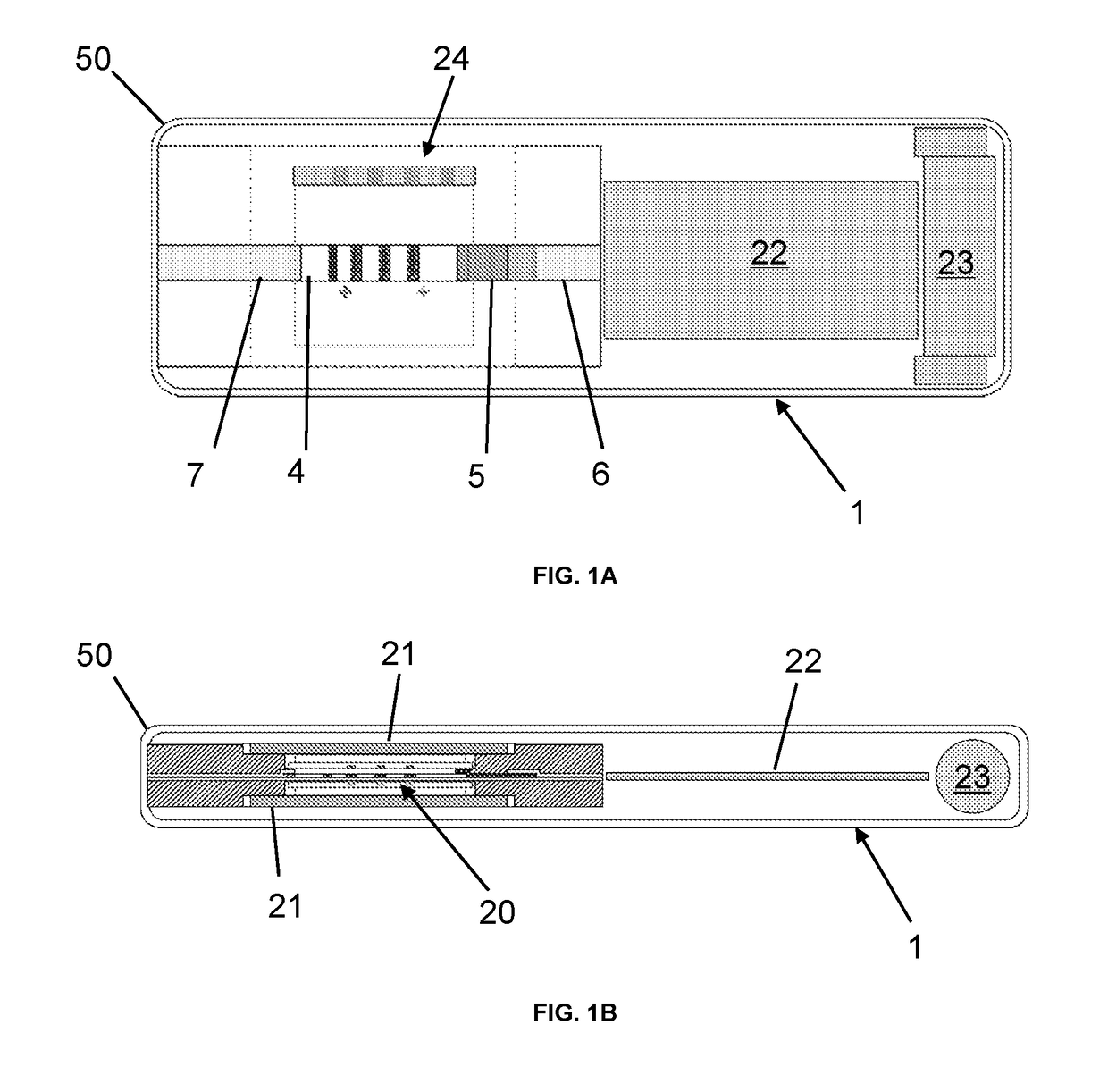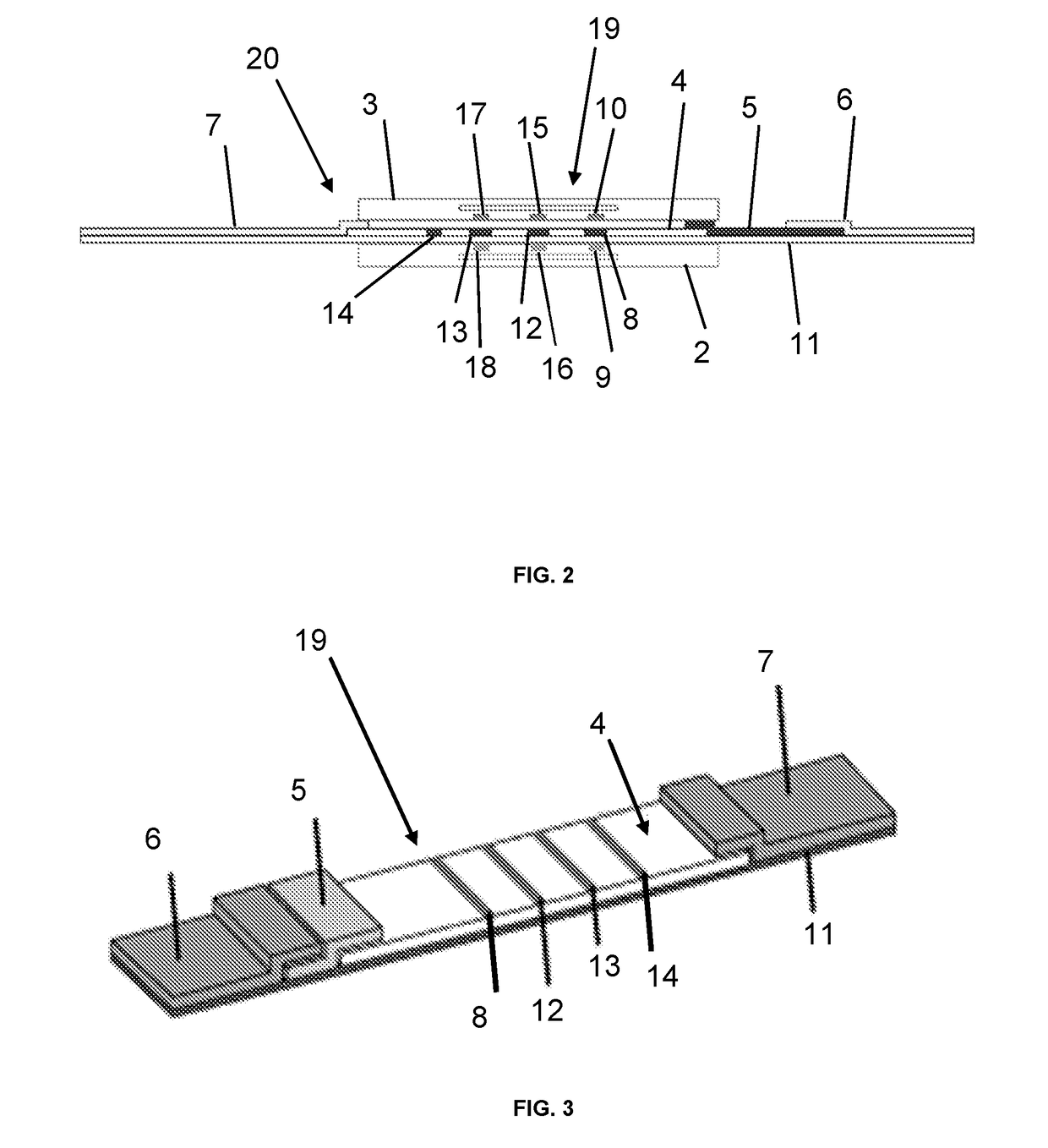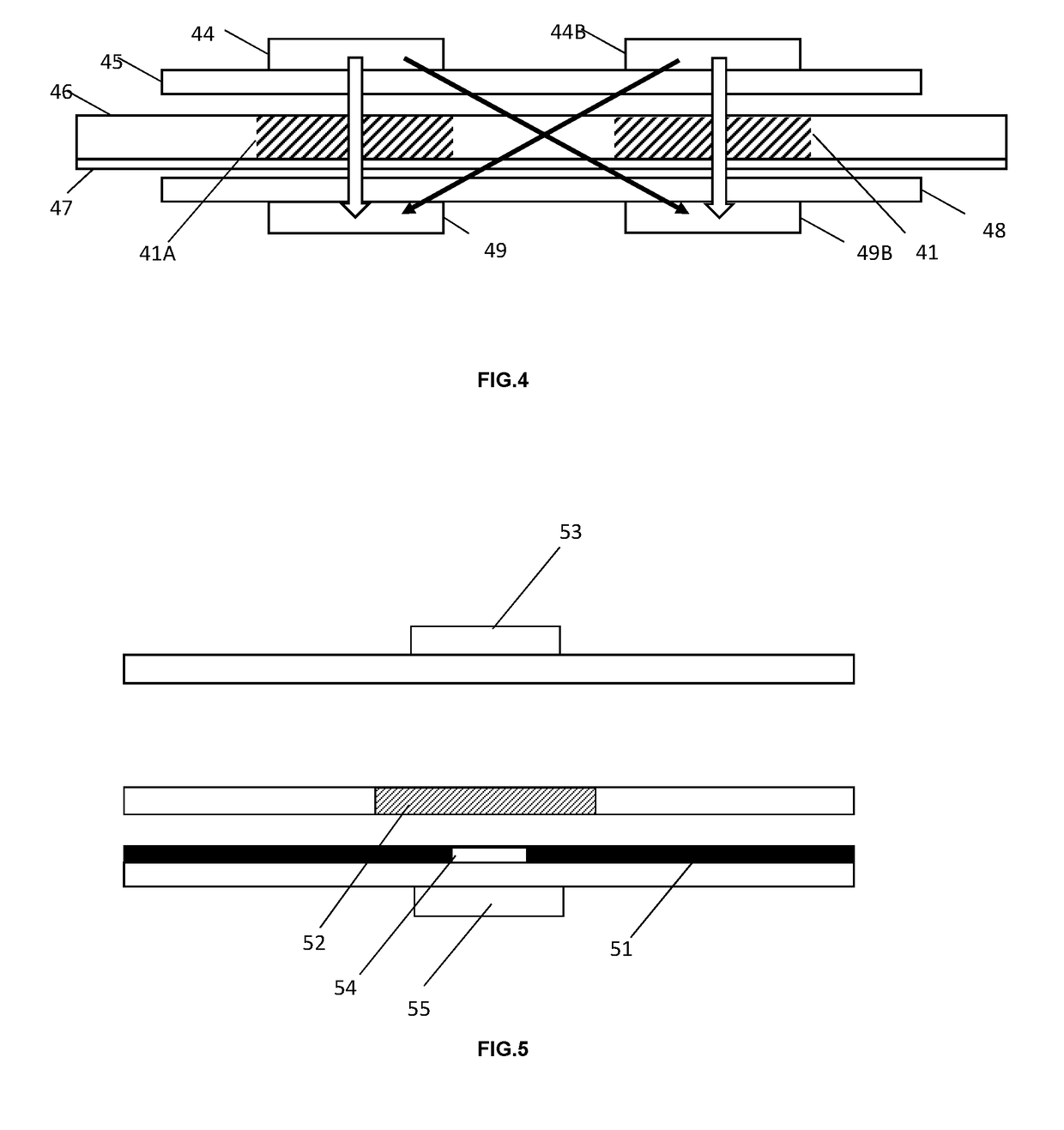Assay device
a technology of assay device and liquid sample, which is applied in the field of assay device, can solve the problems of reducing the accuracy of test, and requiring additional expense for the use of inorganic optoelectrical components, so as to achieve the effect of improving the accuracy of the resulting indication of the analyte concentration in the liquid sample, reducing the sensitivity or specificity of lfd measurements, and compact arrangemen
- Summary
- Abstract
- Description
- Claims
- Application Information
AI Technical Summary
Benefits of technology
Problems solved by technology
Method used
Image
Examples
example 1
[0116]A device comprising seven groups otherwise substantially as shown in FIGS. 1 and 2 was provided in which the OLED detectors were manufactured using solution processing and had the following structure:
glass / ITO / hole injection layer / polymer host+Ir-dendrimer green emitter / Ag
FIG. 7 shows the angular dependence of the emission profile of the OLED emitter (broken line) compared with Lambertian emission (solid line), showing that emission is near-Lambertian. The OPD detectors were also manufactured using solution processing and had the following structure:
glass / ITO / hole transporting layer / polymer donor+acceptor / Ag
A mask was disposed between the OLED substrate and the membrane support and the separation between them was about 0.2 mm. The OPD substrate was about 1.0 mm from the wet nitrocellulose membrane that was devoid of tagging particles. The OLED and OPD pixel sizes were 0.5 mm×2 mm, groups were spaced apart by 2 mm, and the mask aperture size was 0.5 mm×2.4 mm. The cross-talk (C...
example 2
[0117]A device otherwise substantially as in Example 1 is provided in which the OLED emitters further comprise a distributed Bragg reflector positioned between the ITO and substrate and having the structure:
[ITO, 50 nm] / TiO2, 56 nm / SiO2, 92 nm / TiO2, 56 nm / SiO2, 92 nm / TiO2, 56 nm / [glass]
and the device comprises 21 groups. The OLEDs exhibit substantially sub-Lambertian emission. The cross-talk (C) between at least two groups is at least 30 dB.
example 3
[0118]A device otherwise substantially as in Example 1 is provided in which the OLED emitters are top emitting OLEDs comprising a strong microcavity and have the structure:
glass / Ag, 85 nm / hole transporting layer / polymer donor+acceptor / Ag, TeO2, 10 nm
and the spacing between electrodes is about 250 nm. In this embodiment, the OLEDs are positioned on the side of the substrate nearer to the membrane as these OLEDs are top-emitting.
The device comprises 21 groups and the OLEDs exhibit substantially sub-Lambertian emission. The cross-talk (C) between at least two groups is at least 40 dB.
PUM
| Property | Measurement | Unit |
|---|---|---|
| concentration | aaaaa | aaaaa |
| photocurrent | aaaaa | aaaaa |
| fluorescence | aaaaa | aaaaa |
Abstract
Description
Claims
Application Information
 Login to View More
Login to View More - R&D
- Intellectual Property
- Life Sciences
- Materials
- Tech Scout
- Unparalleled Data Quality
- Higher Quality Content
- 60% Fewer Hallucinations
Browse by: Latest US Patents, China's latest patents, Technical Efficacy Thesaurus, Application Domain, Technology Topic, Popular Technical Reports.
© 2025 PatSnap. All rights reserved.Legal|Privacy policy|Modern Slavery Act Transparency Statement|Sitemap|About US| Contact US: help@patsnap.com



